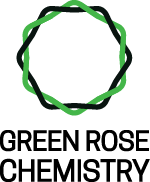Cosmetics labelling regulations are confusing. The formal language, the technical terms, the information spread out all over the place – it’s a large mental barrier for you to overcome before you can take your beauty products to market. We’ve put together this short guide to smooth the way and help you figure out what labels to put on your new beauty product.

What are the regulations for?
Labelling regulations are in place for a few main reasons:
- Safety
Making sure any chemicals with hazards are properly labelled, to protect workers and consumers.
- Communication
Giving accurate and important information to help consumers make decisions.
- Certifying claims
You can’t just say your product is Fairtrade – it needs to be certified properly to prevent false claims and build consumer trust.
This guide will be split up into three main sections:
- Legal requirements
Anything you have to do or follow, otherwise you will likely face legal action.
- Best practices expected by consumers
Things you should do, else you may lose a lot of business.
- Value-add labelling
Things that make your product superior to others in certain ways – sustainability, or fitting a niche market.
Legal Requirements
REACH (Registration, Evaluation, Authorisation and Restriction of Chemicals)
REACH is a European law regulating chemicals for the protection of workers, consumers, and the environment. Following Brexit, the UK adopted a modified version of the law as UK REACH. Both laws require chemical companies to perform specific safety tests and share the results to prove their chemicals are safe.
As a downstream user of chemicals (e.g. formulator), you will need to be aware of REACH. If you don’t count as an importer, there is no need to register under REACH, but you do need to implement safety measures appropriate to the chemicals you’re using. ECHA has an excellent resource for users of chemicals, defining terms that may be used often in regulations.
REACH also has specific regulations for biocides. These are preservatives that keep natural products safe. If you deal with these, it’s worth a read.
CLP (Classification, Labelling, and Packaging)
Cosmetics in a finished state (i.e. the final user can buy them as they are) are exempt from CLP. At any other stage, you must stay in line with its requirements.
CLP requires you to classify, label, and package any hazardous chemicals in an appropriate way before they can be put to market. The aim of this is to protect workers, consumers, and the environment.
So what do you need to put on the label?
- Contact information for the supplier (name, address, telephone number)
- Substance/mixture quantities if the package is available to consumers
- Product identifiers
- Hazard information – pictograms, hazard statements, precautions, etc.
However, if your product is sold in small containers (under 125 ml), you may not have to list some of the hazard or precaution statements on the label.
PIF (Product Information File)
Having a PIF for your cosmetics product is a legal requirement of the EU that the UK continues to uphold after leaving. It contains a description of the product, a cosmetic product safety report (CPSR), any data on animal testing performed, and some other information.
The CPSR is a thorough document on a range of safety criteria including composition, characteristics, and exposures. It’s essentially confirmation that your product meets the safety requirements set by the UK and EU.
CE.way has a clear breakdown of the content required in a PIF and CPSR. There are companies that can construct or offer advice on your PIF at a cost, such as CE.way, NaturallyBalmy and Intertek. Some companies will even offer to produce a free CPSR for you, provided you meet their criteria – usually that you buy all of your ingredients from them.
Efficacy claims
We’ve all heard about products that are all talk. Spinning statistics to make bold claims can erode consumer confidence in your product and brand. Thankfully, efficacy claims are very strictly regulated in the UK and EU. Brands that are “all bark and no bite” likely won’t get very far.
You must be able to support any claims you make – either explicit or implicit – with evidence:
- Pre-published scientific or marketing data
- Experimental studies
- Consumer perception tests
You must also be able to provide buyers with documentation proving the effectiveness of new ingredients. There are specific regulations in place for sunscreen products.
Biodiversity and species protection
CITES (Convention on International Trade in Endangered Species of Wild Fauna and Flora) states that any trade of wild animals and plants must not threaten the survival of the species. This also includes materials derived from these species, and bulk products or formulations that contain them. CITES lists the species with bans or restrictions on export/import. UK-based companies still have to follow CITES following Brexit.
ABS (Access and Benefit-Sharing) protects ‘genetic resources’. This means plants, animals, microorganisms – anything that has genes – and ingredients derived from these sources, like natural proteins and enzymes. If your natural ingredients were available on the market before 2014/2015, you probably don’t have to worry about it, but newer ingredients may well be subject to the treaty. UK ABS differs slightly to EU ABS, explained further here. If your products utilise genetic resources, you may have to be compliant with ABS.
UK cosmetics and the EU
What’s changed since the UK left the EU?
The UK has some new labelling requirements:
- The country of origin must be stated on the label if the product is manufactured outside of the UK – “Made in EU” is not enough; it has to be more specific.
- A UK-based Responsible Person (RP) must be established, and their details (name and address) must be included on the product label. The RP is responsible for making sure the product is compliant with regulations.
If your product is brought to market after 1st January 2021, you will have a two-year transition period to change the label from EU compliance to fitting the UK’s regulations.
If your product was on the UK market before this date, it can continue being sold here indefinitely as long as its label is compliant with EU standards.
Obelis and SGS (https://www.sgs.com/en/news/2021/02/safeguards-01221-brexit-and-cosmetics-regulation-what-are-the-changes) have some good summaries of the changes.
Best practices expected by consumers
While you don’t need to follow the best practices described in this section, you should strongly consider it. Potential customers might be put off if you aren’t, or it might just be helpful for those who have to handle your product.
Corporate social responsibility (CSR)
Sustainable sourcing of ingredients and materials is becoming more and more important to the cosmetics industry. CSR is a movement that holds businesses accountable for the impacts they’re causing on societies and the environment. The ability to trace the origins of ingredients, and hence their sustainability, is highly valued in CSR. There’s a lot to consider here, so Cosmetics Europe has produced an excellent document about CSR and ways to be more sustainable.
Sustainable sourcing and CSR are enforced largely by voluntary standards:
- The Union for Ethical BioTrade (UEBT) – certifies natural ingredients sourced with respect for biodiversity and the environment
- The Roundtable on Sustainable Palm Oil (RSPO) – sustainable sourcing of palm oil
- The Initiative for Responsible Carnauba – sustainable sourcing of carnauba
- The Responsible Mica Initiative – sustainable sourcing of mica

Quality management
Buyers and consumers are always going to want quality products. So, of course, you’ll want to show that yours fits the bill. Following quality management standards shows you think ingredient quality is important, and it’s helpful for building trust. These standards will also help ensure the quality of any ingredients you’re importing.
If you’re producing perfumes or ingredients for them, you may also need to follow IFRA (International Fragrance Association) standards.
Technical documentation
A technical dossier is an excellent source of information for buyers. It’s largely for the ingredients sector of cosmetics, but finished products may want to collate the documents from each material used. Your dossier should contain:
- Safety data sheet (SDS)
Provides hazard information for your product so users can make a risk assessment. Unlike with most chemicals, a safety data sheet (SDS) is not required for cosmetics. However, it is useful to have so that employees involved in production, packaging, transport, etc. are aware of its hazards. If you do choose to have an SDS produced, it will be held to the same standards as those that are legally required.
- Technical data sheet (TDS)
Gives information about the product – composition, how to use it and what to use it on, and warnings.
- Certificates of analysis
Details the quality assessment of the product: purity, identity, potency, quantity, among others. It’s basically an assurance that your product meets its specifications. Evidentec gives a more detailed description here.
CBI has an excellent guide on how to prepare a technical dossier for cosmetics ingredients.
Value-add labelling
In addition to following the law and best practices, you can choose to pursue certification from standards that will add value to your product. It might make some customers choose your cosmetics over others, or it might put you on the same playing field as those who are already certified.
Fairtrade
We’ve all heard of Fairtrade. It was originally an agricultural standard to ensure farmers are paid fairly for their produce, with the aim of bettering quality of life. It’s now increasingly used in cosmetics as well. In essence, Fairtrade covers the social part of sustainable production. But there’s more than one Fairtrade organisation:
- Fairtrade International – the one you’re most likely familiar with already, generally focused on more popular products like bananas and coffee.
- Fair for Life – focuses on more specialist ingredients like herbal teas and essential oils.
- FairWild – for wild harvested ingredients.
Natural and organic
Being certified as natural or organic is attractive to consumers. But what does it mean?
Natural cosmetics are free from synthetic ingredients – everything has to be sourced from nature. They will also be held to a high standard of sustainability in sourcing and packaging. Using renewable sources of plants and abundant sources of minerals will often (but not always!) make it a more sustainable product.
Organic products are a little more complicated. Organic farmers have a very limited list of synthetic (human-made) chemicals that they can use. They can’t use any genetically modified organisms (GMOs), or use fertilisers made from treated sewage. Also, radiation can’t be used for sterilising. It should be noted that organic doesn’t necessarily mean better or safer – it can, but not always!
The natural and organic labels add credibility to products. Some customers see them as proof of quality. The natural and organic cosmetics market in Europe alone was valued at €3.6B in 2018.
There’s a whole range of regulating bodies for natural and organic cosmetics, such as:
- COSMOS – international natural and organic certification for cosmetics.
- NaTrue – international natural and organic cosmetics for cosmetics.
- Organic Farmers & Growers – UK-based organic certification.
Sustainability
Proving that you are operating while protecting the environment is an excellent way to build trust with consumers. A number of organisations exist to certify this:
- Rainforest Alliance – certifies sustainability in forest usage, biodiversity, human rights, and many other criteria.
- Carbon Trust – a public commitment to reducing carbon emissions, and a certification that the company’s carbon footprint has been measured.
- Global GreenTag – gives a green rating to products based on life cycle assessment among other criteria.
What should you do?
To fit minimum legal requirements, you need to ensure that your company and products are compliant with:
- REACH
- CLP
- Having an up-to-date and accurate PIF
- Backing up product efficacy claims with verifiable evidence
- CITES and ABS biodiversity and species protection
- New UK (post-EU) labelling and RP requirements
However, there may be specific regulations for your product in certain sectors of the cosmetics industry, such as sunscreens. It is important to check these to ensure you are compliant with all legal requirements.
Complying with some additional regulations will broaden your market considerably, since many buyers will not work or trade with companies and products without:
- Technical documentation (TDS, SDS, certificates of analysis)
- Corporate social responsibility practices
- Quality management certifications
Not all labels are necessary, but some optional ones can make your product more attractive to buyers and consumers:
- Fairtrade certifications, such as Fairtrade International
- Natural or organic certifications, such as COSMOS
- Sustainability certifications, such as Rainforest Alliance
Help with choosing labels is available from a number of companies – Green Rose Chemistry can point you in the right direction if you get in touch!
Further reading
Business Companion has a good overview of what information needs to be supplied and what actions must or must not be taken when creating a new cosmetics product.
EcoLabel Index has a collection of regulating bodies for environmental and social sustainability. They have put together a list of certifications applicable to cosmetics.

